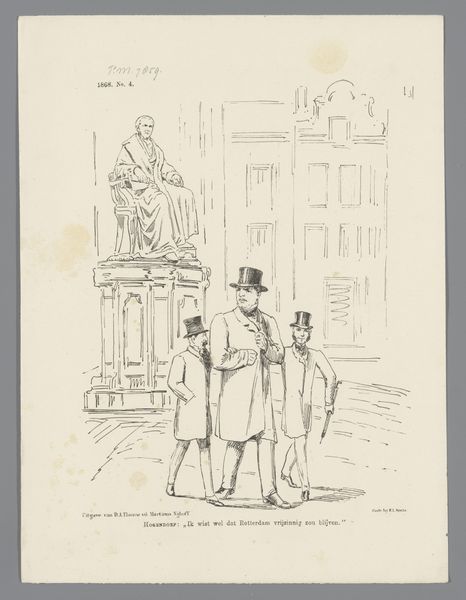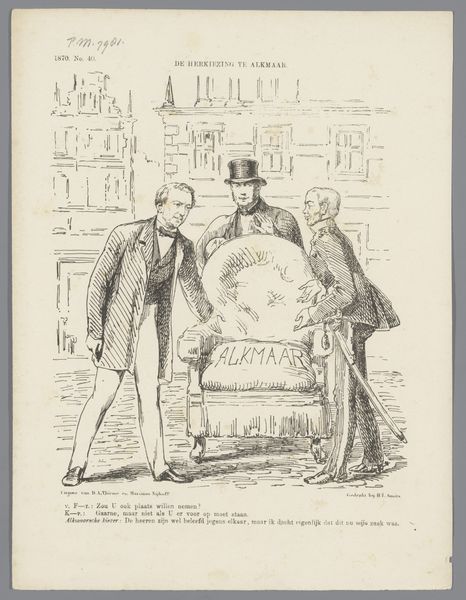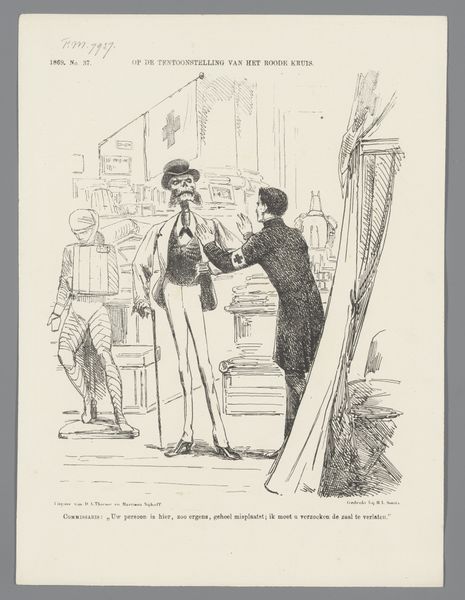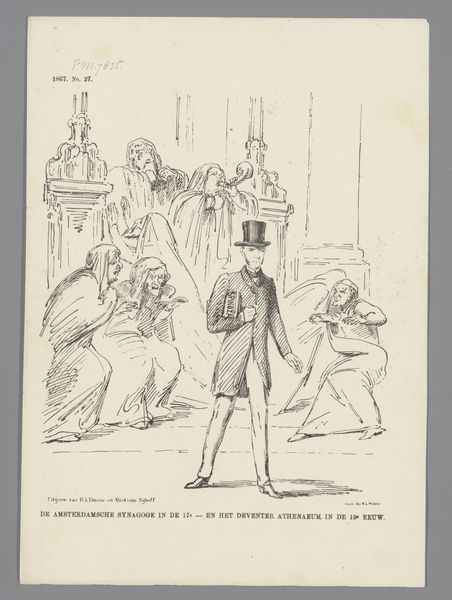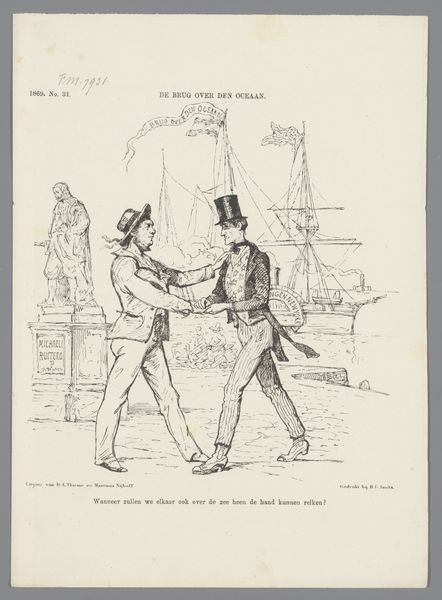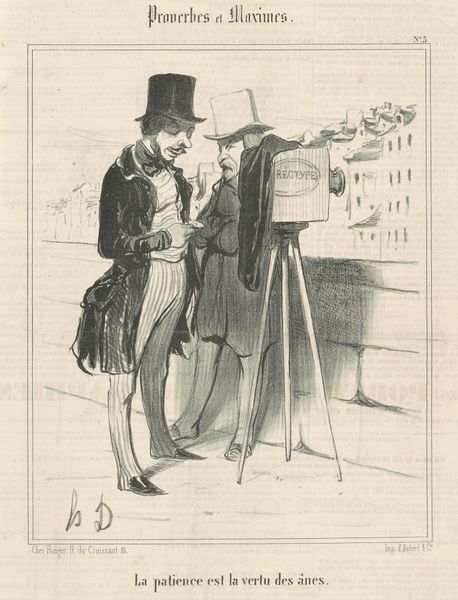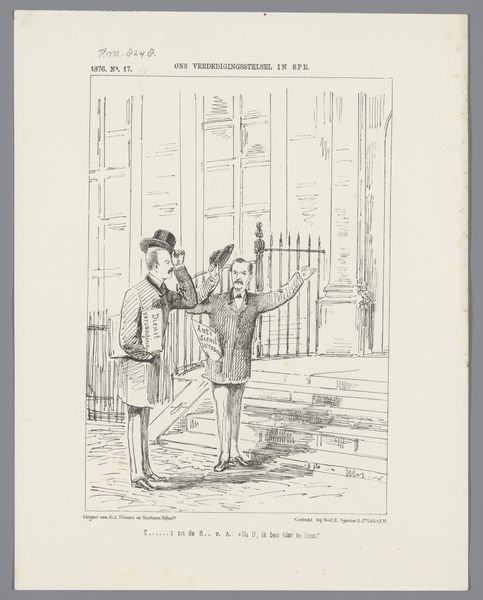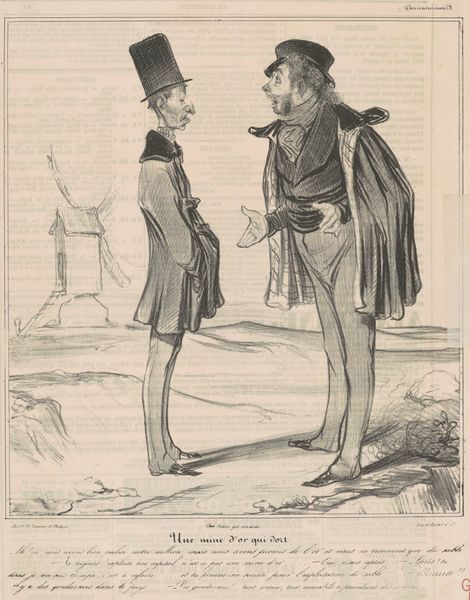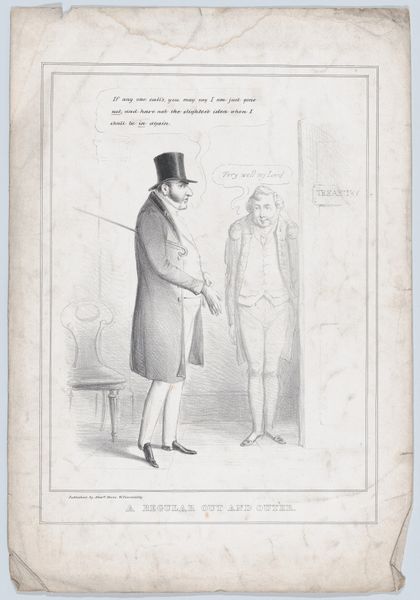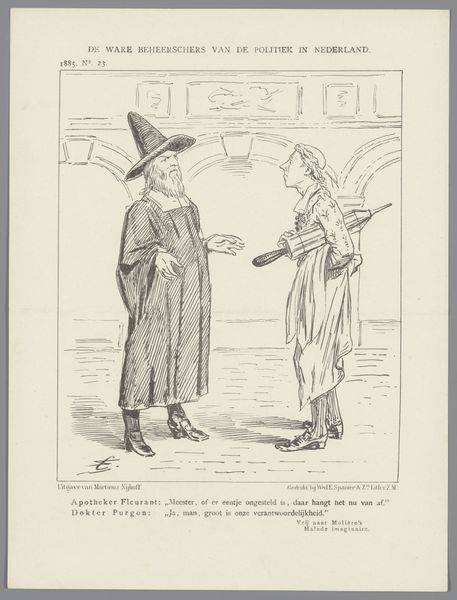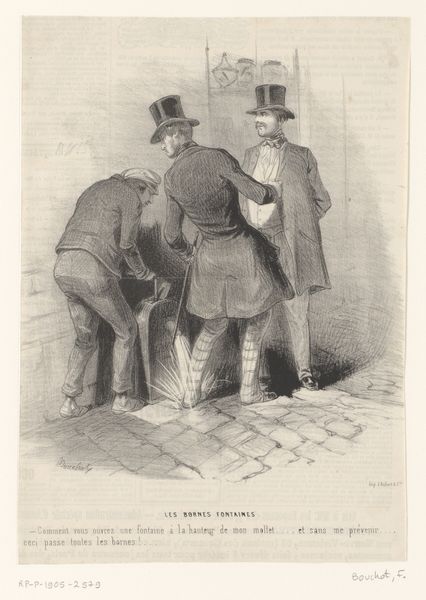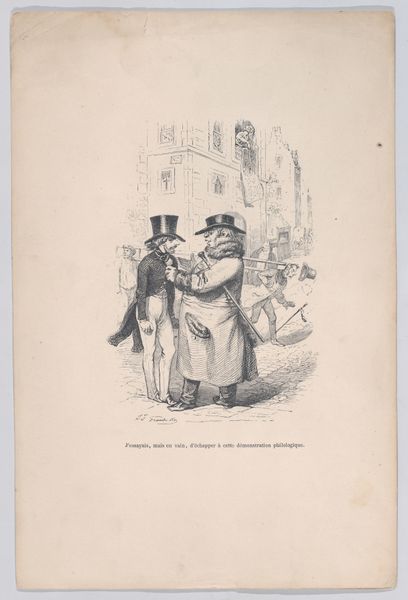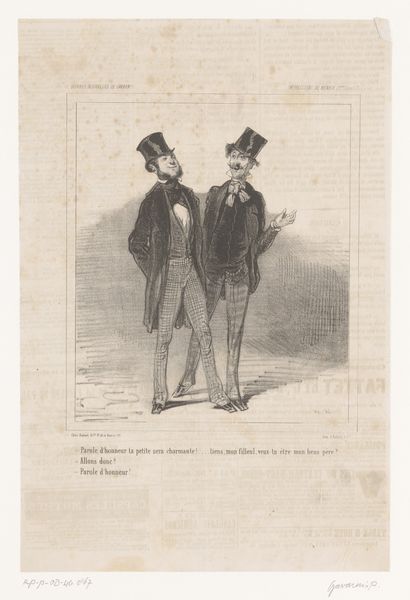
Spotprent op de aanneming van de gouden standaard door de Tweede Kamer, 1875 1875
0:00
0:00
Dimensions: height 275 mm, width 215 mm
Copyright: Rijks Museum: Open Domain
Curator: This engraving, dating from 1875, is titled "Spotprent op de aanneming van de gouden standaard door de Tweede Kamer," which translates to "Cartoon on the adoption of the gold standard by the Lower House." Editor: Immediately, I'm struck by the rather severe neoclassical style contrasting with the potentially satirical subject. It's austere, almost biblical in its starkness. The two men look like figures in a morality play. Curator: Indeed. The artist, Johan Michaël Schmidt Crans, employs the academic style common at the time. The setting seems to represent a grand church, with the inscription above reading "Auri sacra fames," a quote from Virgil that translates to "Accursed hunger for gold." This points directly to the thematic concerns of the piece. Editor: The title reveals the core conflict: the adoption of the gold standard. I see how the artist uses the classical architectural setting to suggest something weighty, perhaps even divine, associated with this decision. But what exactly is being critiqued here? Is it the avarice the text mentions? Curator: Exactly! The engraving features two men, likely caricatures of prominent political figures. The text bubbles offer their debate, with the speaker on the right asking with slight derision "Will you adopt that?" and the other responding something about, “I will reconsider” along the lines that “if you let out over it earlier I wouldn't think that you'll accept it soon." These dialogues emphasize an existing power dynamic or dispute behind a consensus that now might or might not be forced and accepted. Editor: The exaggerated features of the characters suggest skepticism. Are they caught in their "accursed hunger for gold?” This work encapsulates political cartooning; presenting critique within accessible form, but also creating historical document that represents shifting attitude of societies during economic progress Curator: And that inherent symbolism, using recognisable imagery, offers an intellectual entry point. The architectural design reinforces feelings associated at that period of time of financial institution, power and structure, and offers clues as to why this image will evoke certain responses. Editor: Looking closely allows an opportunity to engage critically with our own socio-political constructs that surround wealth or governance today, don’t you think? Curator: Precisely. It reminds us of enduring questions concerning material ethics, policy impacts, and the responsibility carried within systems that distribute.
Comments
No comments
Be the first to comment and join the conversation on the ultimate creative platform.
